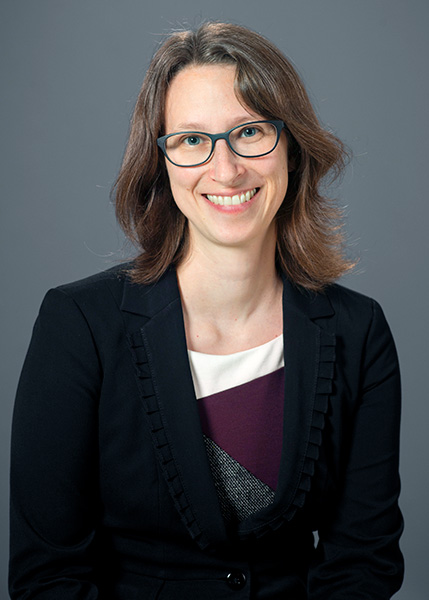- Faculty
- Carolyn Grosch
Carolyn Grosch

Contact Information
Email: cgrosch@wcu.eduPhone: 828.227.2553
Office: 137A Fine & Performing Arts Building
Pronouns: she/her/hers
Biography
<b>Carolyn Grosch </b>is the Curator of Collections and Exhibitions at the Western Carolina University Fine Art Museum. She<b> </b>has 18 years of experience in the museum field with expertise in collections management, curatorial practice, and academic museum programs. She currently serves on the Board of Directors of the North Carolina Preservation Consortium. Prior to her appointment at the WCU Fine Art Museum, Grosch worked as the Associate Curator at the Asheville Art Museum in Asheville, North Carolina; the Registrar and Assistant Curator at the Lyman Allyn Art Museum in New London, Connecticut; and as both an educator and Assistant Registrar at the Tufts University Art Gallery in Medford, Massachusetts. She holds a Masters Degree in Art History and Museum Studies from Tufts University with specializations in contemporary art and collections care.
Education
- MA, Tufts University, Art History and Museum Studies
Teaching Interests
<b>In her role as Assistant Professor</b> at Western Carolina University, Grosch teaches an Exhibition Practicum course that gives students the opportunity to develop a professional art exhibition and learn valuable museum skills. Grosch believes in the value of interdisciplinary and object-centered learning and strives to make the Museum a site where disciplines across campus can come together in discussion. Her curatorial research has centered on site-specific installation, contemporary photography, the intersections of contemporary art and pop culture, and those themes and artists of importance to Western North Carolina, including studio glass and Cherokee art and culture.
Research Interests
<b>Her recent exhibitions</b> include <i>Resounding Change: Sonic Art and the Environment</i>, a campus theme-inspired project co-curated with musicologist Tyler Kinnear featuring contemporary artists who use sound to engage with environmental issues; <i>Curious Terrain: WNC From the Air</i>, an exhibition of aerial photographs that captured the unique qualities of our region’s built environment and raised broader questions about humanity’s impact on the land through agriculture, energy, industry, and housing; and<i> Outspoken: Paintings by America Meredith</i>, one of many exhibitions that are part of an ongoing effort by the Museum to ignite conversations about Native cultures, histories, and experiences in the Americas.